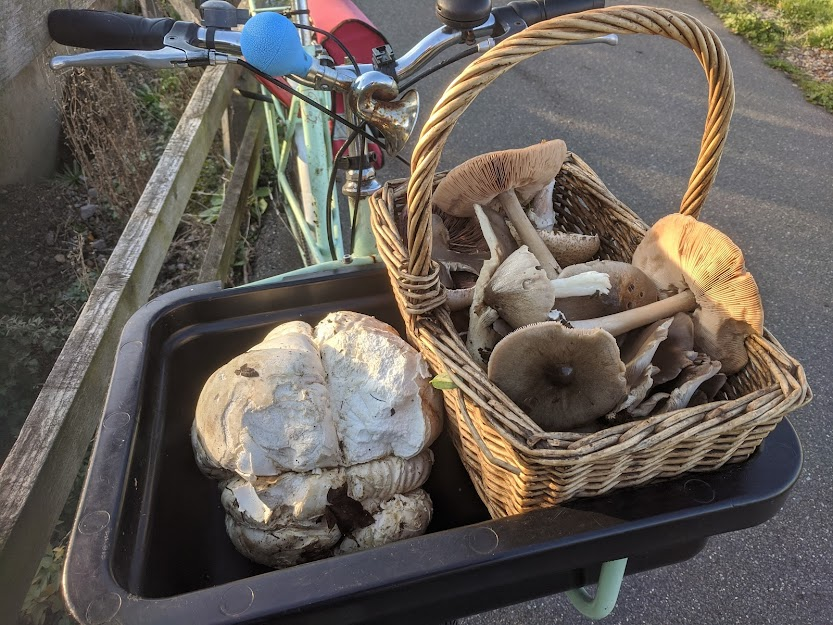
Volvariellid
by Cab DavidsonAnother uncommon myconid of Mystara...
| Stat | Volvariellid |
| Armour Class: | 7 |
| Hit Dice: | 1+1 |
| Move: | 120’ (40’) |
| Attacks: | 1 weapon |
| Damage: | By weapon +1 |
| Number Appearing: | 1d10 (20d10) |
| Save As: | F1 |
| Morale: | 12 |
| Treasure Type: | Zero (M) |
| Intelligence: | 9 |
| Alignment: | Chaotic |
| XP Value: | 15 |
Volvariellid myconids begin their time as small (8” across) egg shaped balls of fungus, appearing rapidly in fields after grain (wheat, barley, oats, field peas, rice, etc.) harvest, and straw is scattered across the field. The parent myconoid can be many hundreds of yards across, connecting fields separated by hedgerows, patches of woodland, even rivers, and can wait for decades for an opportunity to form myconids. Most years, a tidy farmer will collect up sufficient straw for use in thatching, basket work, ropes and animal bedding etc. such that the myconoid has insufficient to feed on to produce myconids, but on occasion an untidy farmer or an unfortunate set of circumstances will combine such that strewn straw covers the field after harvest, and that is when the volvariellid strikes.
The egg like structures, called volvas, from which the myconids spring, seem to grow in a matter of hours, and depending on how much straw is present may appear in massive numbers and generate a virtual army of myconids overnight. They are perhaps the most humanoid like of all myconids, having idenfitiable heads and faces beneath grey mushroom caps with pink gills. They are short lived, with a single purpose – to kill.
In truly wild spaces volvariellid myconoids are both rare and benign, producing a few myconids each year who generally keep the wooded pastures in which they reside clean and safe. But farmlands, fertilised with animal manure, are both the ideal location for the myconoid to grow and, through annual ploughing, the most hostile for the growth of their myconids. Over years, indeed over generations, their increase in scale is matched only by their growing resentment. It takes little, merely a slovenly farmer or unfortunate storm to make a crop rot, and volvariellid myconids can rise in frightening numbers to seek revenge.
They attack farms and villages in a coordinated way, using weapons and armour sequestered in oiled rags and sack cloth in hedgerows and under walls for years, arming themselves with more weapons and agricultural tools as they travel. They seek to destroy farms, farmers, their families, labourers and their tools (ploughs, rakes, hoes and spades, anything that moves earth) and to sequester weapons and treasures away for future attacks should their renewed attempt to wipe out local civilisation fail.
Volvariellid myconoids in farmlands cannot be reasoned with. Maddened by years of what they view as agricultural warfare, each believes that only a policy of complete elimination can solve the human problem. They have no allies as such, but clever bands of kobolds have experimented with spreading straw and detritus from hay ricks and straw stacks in the hope of creating chaos – but they have discovered that the volvariellids are not discerning in their all-consuming quest for revenge.
The Science Bit: They're sometimes called rose gilled grisettes here in the UK, also known as stubble rosegills, they're increasingly common mushrooms in the modern era where farmers leave the chopped straw on top of stubble for a few days before ploughing it in. Its a substrate they really thrive on. They're not so very dissimilar to rice straw mushrooms. Quite delicious.
And here's a basket full of them (next to the giant puffball, obviously)
